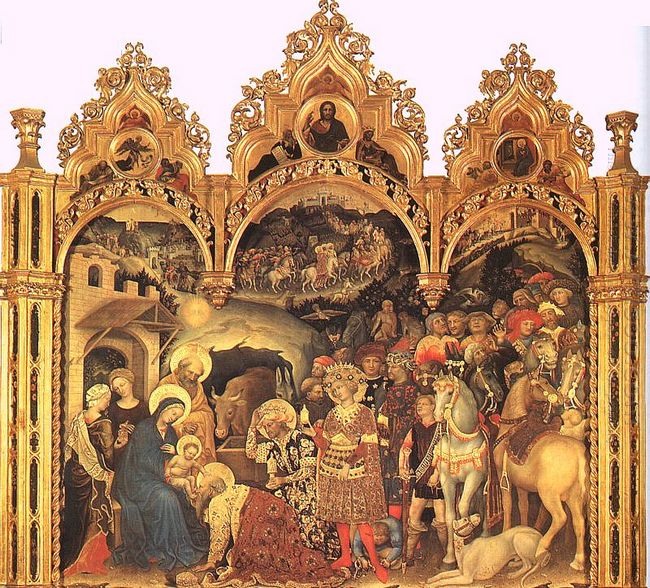Gentile da Fabriano is an Italian painter active in Florence in the same period as Masaccio. The altarpiece Adoration of the Magi he created in 1423 is recognized as one of the masterpieces of the International Gothic painting style. And it is now housed in the Uffizi Gallery in Florence.
The painter aims at rendering gorgeous and brilliant atmosphere and decorative artistic effect. He has tried perspective space drawing and the picture shows vision, the middle ground and close range. The figures portrayed are the well-dressed king, courtiers and attendants as well as animals like horses, cattle and sheep. The colors of the entire painting including people, animals and environment are resplendent and magnificent. This actually depicts the luxury scene of knight etiquette in middle ages so as to beautify and eulogize the pious feelings of the nobility to the Virgin Mary and the Jesus.

Adoration of the Magi shows the impacts that international and Sienese schools make on Gentile’s art. Fabriano combines his painting style with the Renaissance new styles. This work describes the three Magi are on their way to the large meeting with the Virgin Mary and the Jesus. As we can see from this painting, all the figures are in splendid and delightful costumes. Adoration of the Magi is the most common themes in the paintings of the Renaissance.
According to the Bible, Magi are informed that the new king of the Jews will be born through observing the stars at night, so they rush to Jerusalem for pilgrimage. King Herod the Great hears about it, and he orders three Magi to inform him the child’s whereabouts after they know it and then he wants to go for a visit himself. Lead by the constellation, three Magi finally finds the Virgin Mary and the infant Jesus, The Magi offer the Virgin and the Child gold, frankincense and myrrh as gifts, which are particularly valuable at that time. Gold represents valuable confidence; frankincense represents devout prayer; myrrh represents suffering mind.